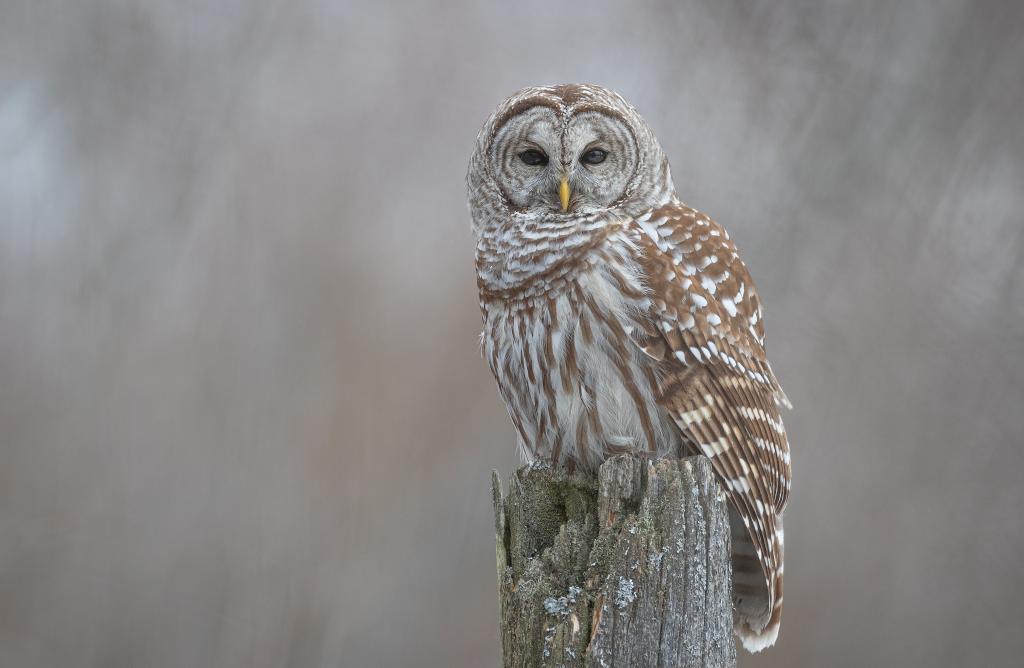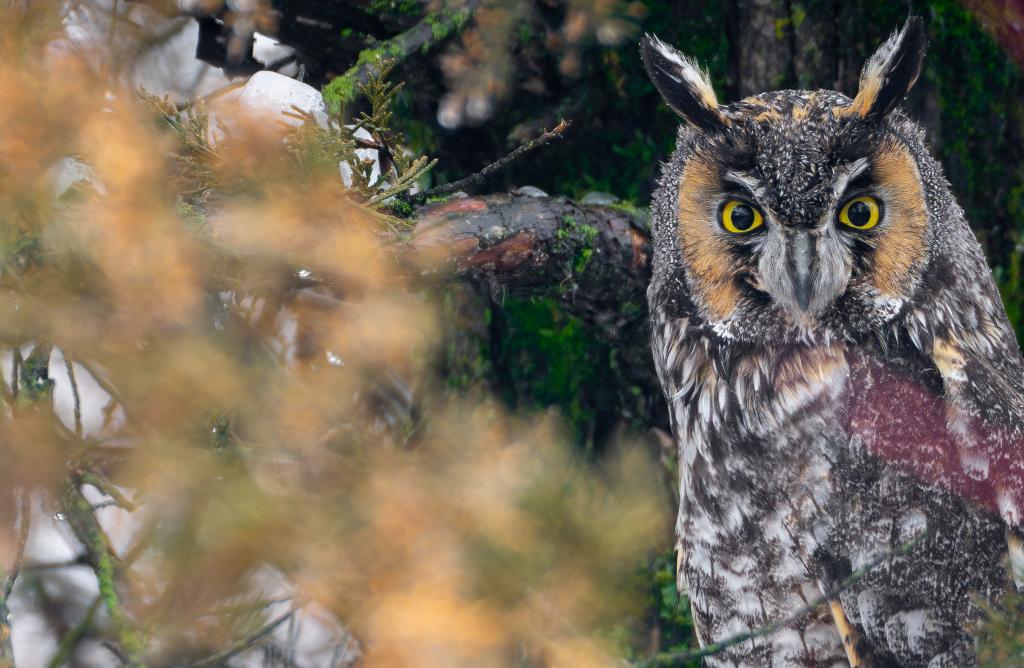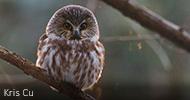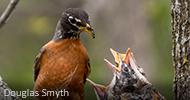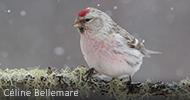Although it is the tallest owl in the world from head to tail, the Great Gray Owl appears bulkier than it is due to its thick feathers. This insulation keeps it warm in northern climes, where it uses its incredibly accurate hearing to hunt small rodents, even under deep snow cover.
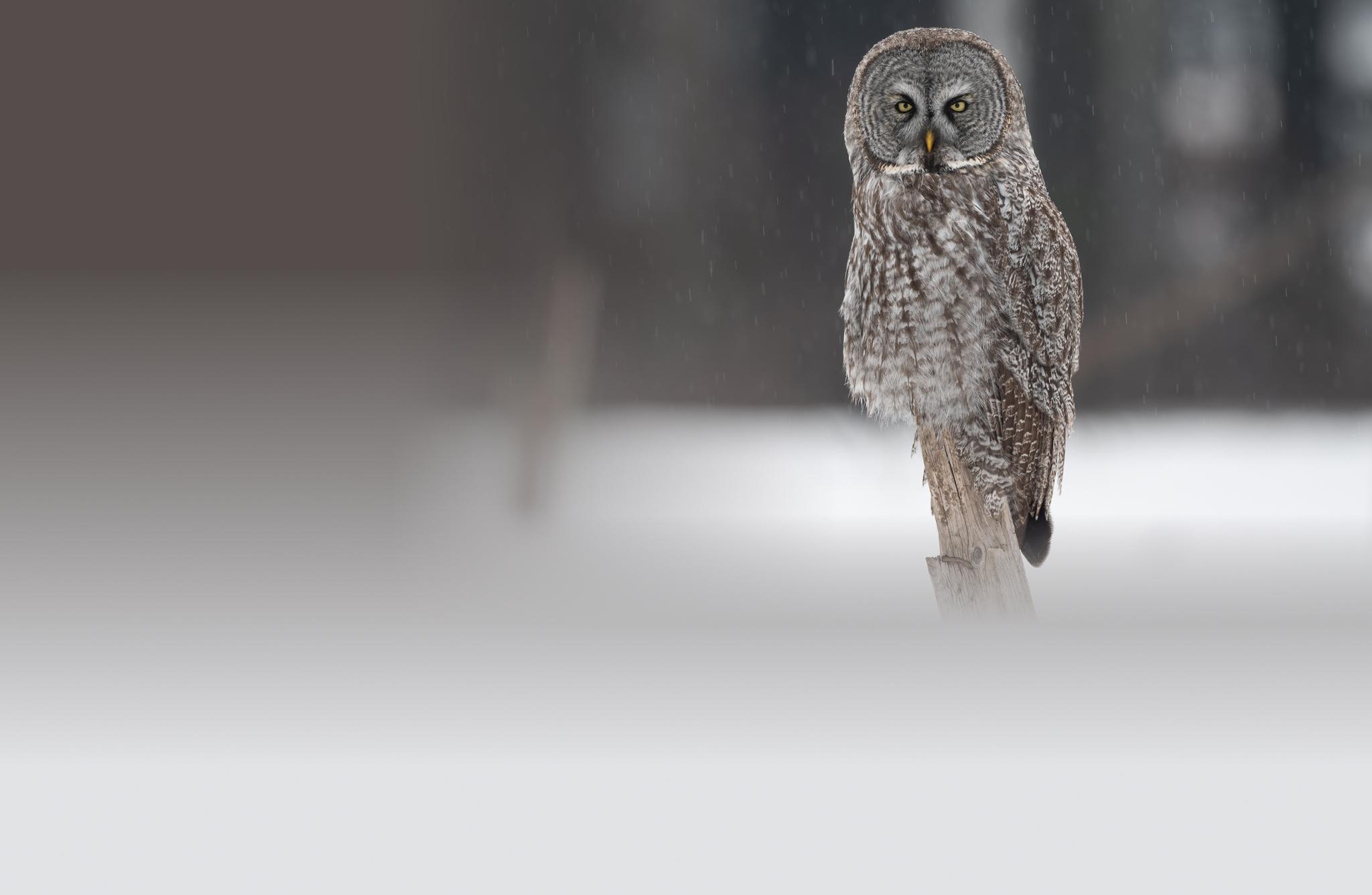
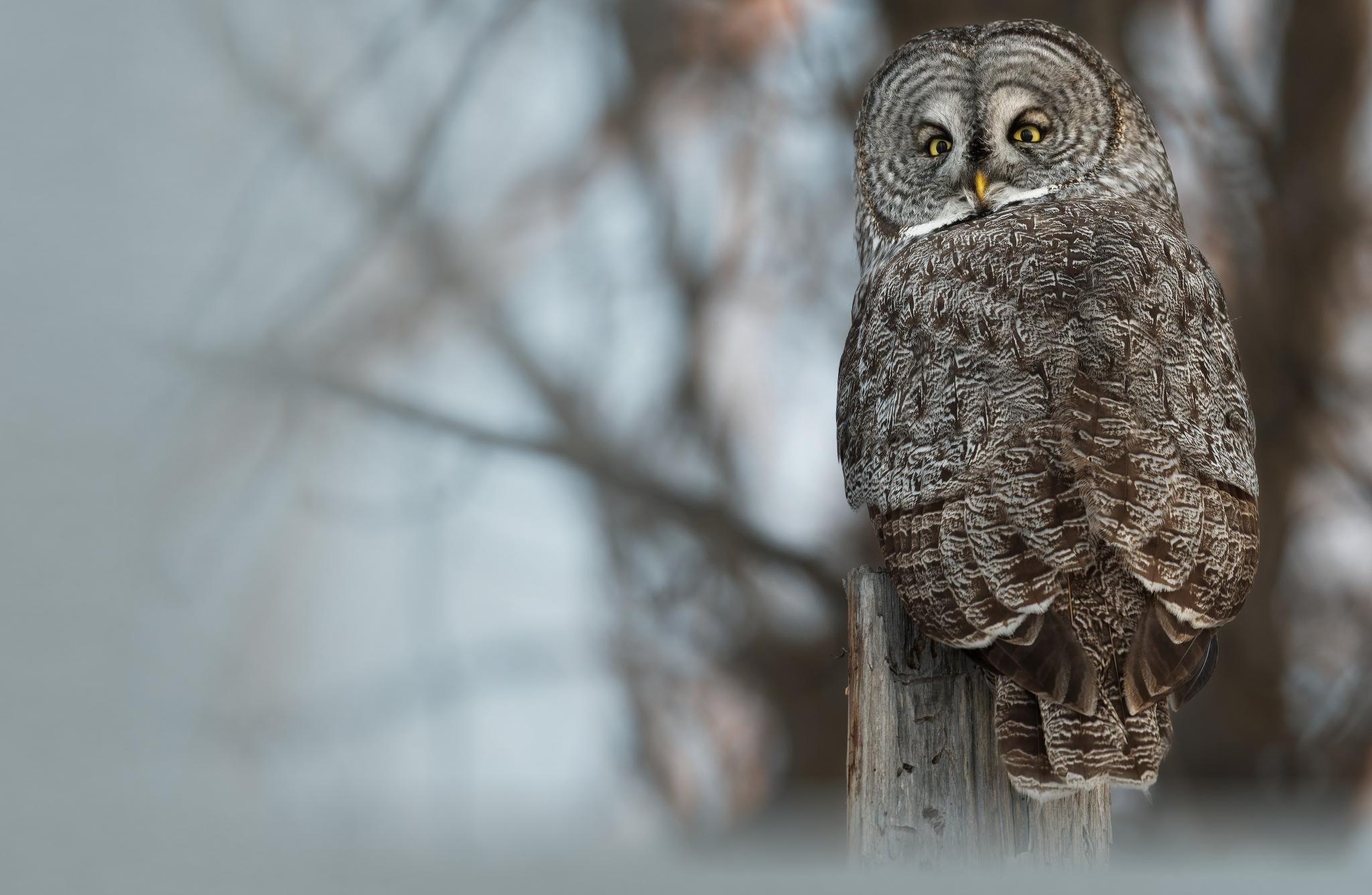
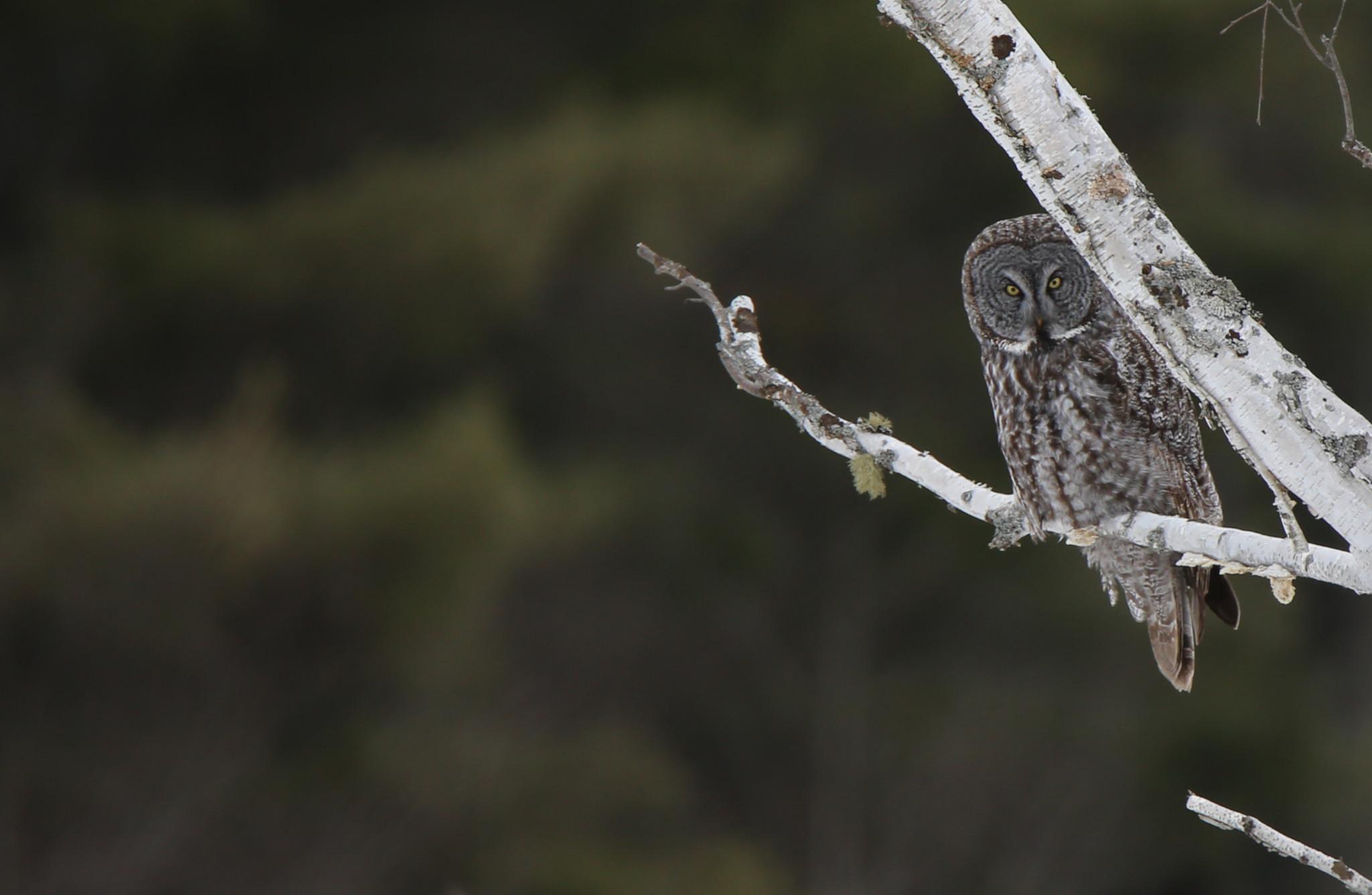
Change media quality
Change image quality to reduce page loading times
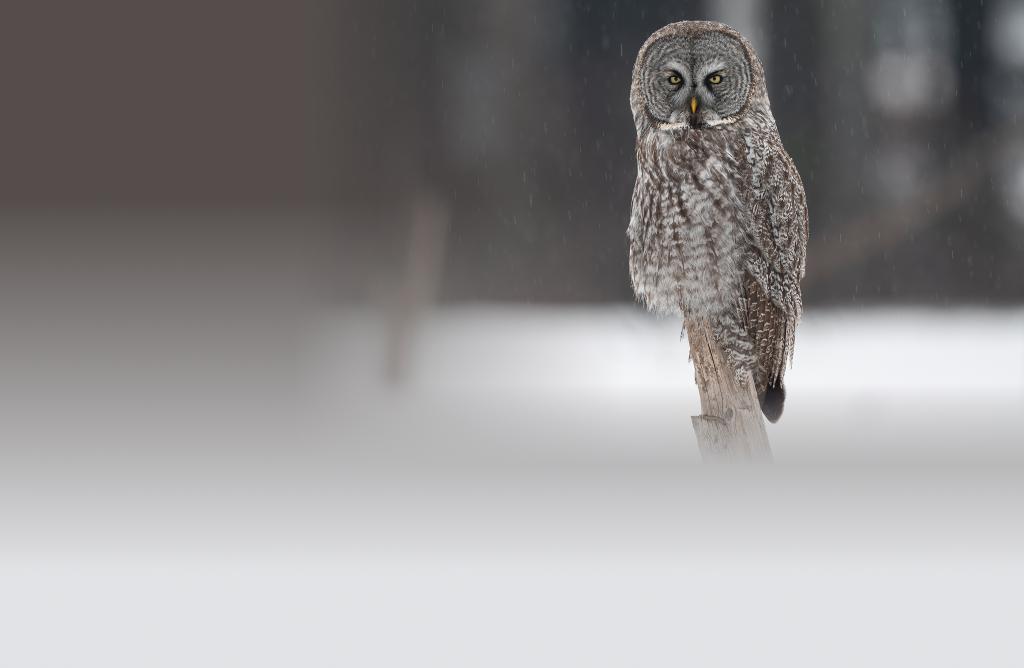 Great Gray Owl
Great Gray Owl
The Great Gray Owl is a year-round resident of northern forests throughout North America and Eurasia. In Canada it is primarily found in boreal and alpine forests from Yukon to Ontario, but in some years can range as far as southern Ontario and Quebec in winter. The Canadian population is approximately 50,000 individuals, representing 42% of the global population and a moderate degree of responsibility for Canada. Only a small proportion of the Canadian population is sampled by monitoring programs, but available data suggest a large increase relative to 1970, although confidence in the trend is only low. The national population of Great Gray Owl is within its goal range.






Like most owl species, Great Gray Owl is not well monitored in Canada. Its periodic irruptions in response to fluctuations in prey abundance further complicates attempts to understand population trends. Overall, the Christmas Bird Count (CBC) provides the greatest spatial and temporal coverage of the Canadian population. The national CBC trend suggests that the Great Gray Owl population in Canada has more than doubled since 1970. However, precision of the trend estimate is poor due to highly variable annual totals, and the CBC covers relatively little of the species' range. Furthermore, CBC methods are not highly standardized and targeted efforts to record owls may have increased over time, which could inflate trend estimates if data were sparse in the 1970s. The Breeding Bird Survey indicates a moderate increase over the same period, but has even more limited coverage of the range and its timing is poor for detecting the species. More recently, the Nocturnal Owl Survey has provided more targeted monitoring of Great Gray Owls, and shows a national decline of 34% between 2008 and 2021. As there is some disagreement among trends, there is only very low confidence in the large increase indicated by the CBC. Future assessments of status will hopefully benefit from regional Nocturnal Owl Surveys once they become more widespread and amass a longer time-series, and from comparison among breeding bird atlases.
The goal for Great Gray Owl is to remain at or above its recent population level, based on the Christmas Bird Count. Trend data show that Great Gray Owl is currently within its goal range.
| Designation | Geographic Area | Status | CITATION |
|---|---|---|---|
| IUCN | Global | Least Concern | |
| Wild Species | Canada | Secure |


Although it is the tallest owl in the world from head to tail, the Great Gray Owl appears bulkier than it is due to its thick feathers. This insulation keeps it warm in northern climes, where it uses its incredibly accurate hearing to hunt small rodents, even under deep snow cover.
Great Gray Owl is reported throughout the year in Canada, with the lowest levels of observation during the summer likely reflecting the owl's secretive habits and habitat during the breeding season.




